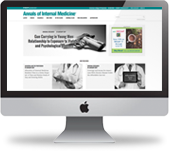Listening for better patient communication, connection
Three levels of listening can help with the diagnosis, an expert says.
As an urgent care physician, I often encounter patients with straight- forward symptoms, like a cough. Since the reason for the visit is written as a one-liner in the chart, there is the danger of walking into the room with a diagnosis and plan based on the one-liner, which makes it more challenging to really listen to the patient.
Thus, when I walk into the room, I always ask: “So how can I help you today?” When the patient tells me what brought them into the office, I try not to interrupt, and I try to truly listen. Physicians tend to interrupt their patients far too quickly, letting the patient speak for an average of about 15 seconds before interrupting them. Then we take over the conversation, telling patients what we think, and unfortunately likely missing a lot of what the patient is concerned about.
After I have listened to the patient's concerns, I summarize—”I heard you say this. Did I get that right? Please correct me if I didn't”—so the patient understands that I was listening and that I really care about what they said. That honestly makes my visits much faster, because it prevents miscommunication.
Listening seems so simple, but it is really challenging. As doctors, we think we are really good listeners. It is easy to listen well when what we hear is interesting, and when we don't have anything else on our mind. But as soon as we have other things on our mind or we are stressed, we start to listen to the voice in our own head, and then we stop listening to the person in front of us.
I became aware of this when I went through an intense coaching program to become an executive coach. In this program, we talked a lot about listening and identified three stages of listening. The first stage is internal listening, level one, and that is what we often do as physicians. We go into the patient encounter with our agenda—to diagnose and treat the patient's medical concern. We ask the patient questions, form the differential diagnosis in our mind. Then, based on the patient's answers to more targeted questions, we narrow down the differential diagnosis. Especially in a busy medical practice, level one listening is the most common and a very useful level that we use, in order to listen to our patients.
Level two listening is listening on a much deeper level. Level two listening takes into account that most communication is actually conveyed not through words but through body language, tone of voice, facial expressions. Let me give you an example: My patient is reporting a cough, but I notice that their facial expression is really scared. They seem very anxious. If I just give them some cough medication, I miss the deeper meaning of why the patient is actually there and what they are anxious about and will not address their concern.
Level three listening is listening at level two with what you already know about the patient. For example, in my primary care practice, when I knew a patient had certain health goals, and suddenly they came in and said something completely different and their body language seemed very tense, that's level three listening. “Last visit, you told me that you wanted to do that. Today you want to do this, and you don't look happy about it. What happened, what changed?”
As a physician, I'm really good at coming up with a diagnosis and a treatment plan, telling people what to do to resolve their medical complaint. Coaching is very different from this. As a coach, you should not tell someone what to do. Coaching involves asking a lot of powerful questions and then truly listening to the answers. As physicians, we are familiar with this from the motivational interviewing framework. For example, I can tell a patient, “You need to exercise, you need to lose weight,” but often I'm not very successful with that. Instead, to involve the patient, I might ask: “What are your goals? What would work for you? How can I support you to get there?” Then I really listen to the patient's answers. I listen with the goal of understanding and connecting with the patient.
As physicians, we want to share a lot of information with our patients, and often our conversations can become monologues. We forget that when we are talking, we cannot listen and might even miss the patient's body language telling us that they are very confused. Thus, even when sharing a diagnosis or treatment plan with the patient, I try to have a dialogue and listen carefully to the questions and concerns they have. If I recommend something and the patient doesn't do anything with this recommendation because they did not understand it, I've wasted my time and the patient's time.
In my experience, this coaching approach to patient communication works because at the end of the day, the patient is the most important person in the patient/physician encounter. Actively listening to our patients to make sure that they feel understood fosters connection and trust and is crucial for the patient/physician relationship.




